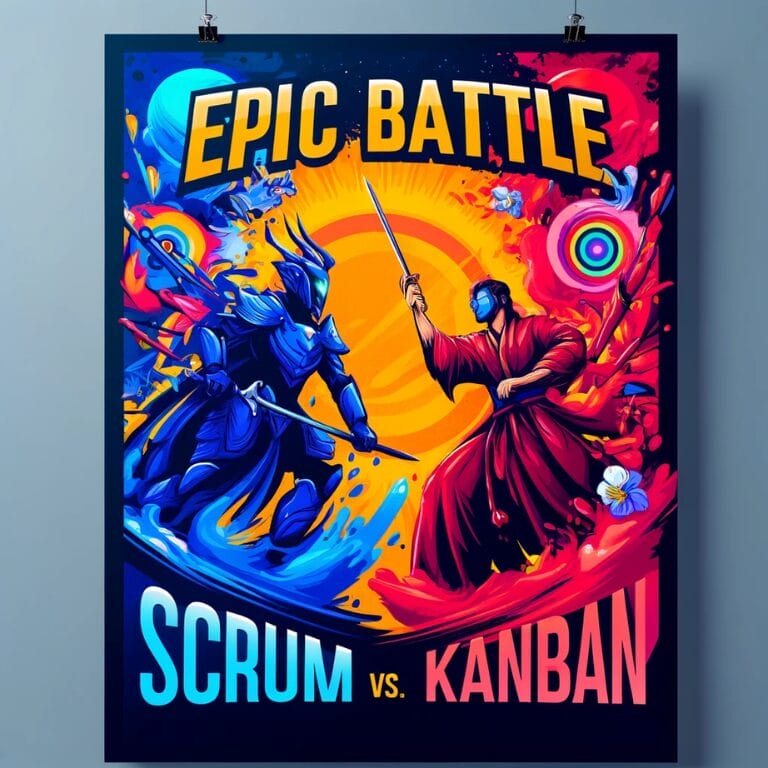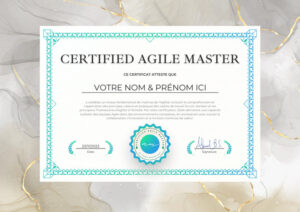As part of the Scrum methodology, artifacts play a crucial role in ensuring transparency, inspection and adaptation. They provide essential information on work in progress, actions to be taken and progress achieved.
This article aims to explain in detail the three main Scrum artifacts: the Product Backlog, the Sprint Backlog and the Increment, as well as their associated commitments.
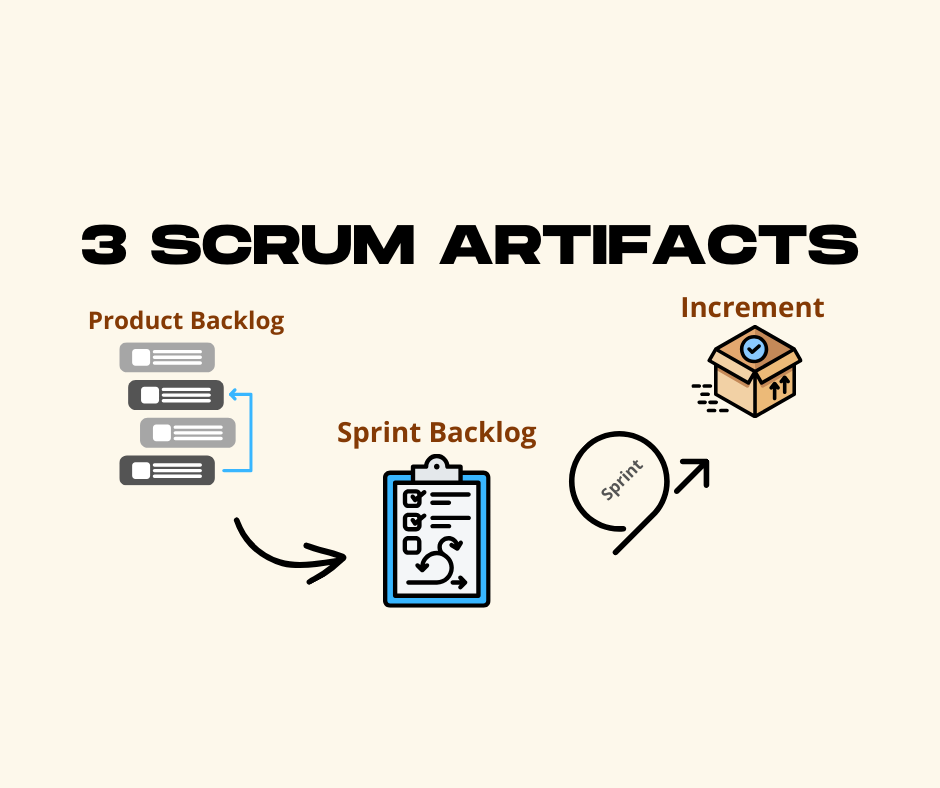
What is a Scrum Artifact?
A Scrum artifact is a tool used by Scrum teams to represent work or value. It provides important information about the product under development, the actions required to achieve the objectives, and the measures taken during the life of the product.
Artifacts are designed to maximize the transparency of key information, enabling the Scrum team and stakeholders to inspect and adapt their work accordingly. There are three main Scrum artifacts: the Product Backlog, the Sprint Backlog and the Increment.

Product Backlog
Description
The Product Backlog is an ordered list of everything needed to improve the product. It is the one and only working reference for the Scrum team. Product Backlog items are continuously refined and can include user stories, features, business requirements, enhancements and bug fixes. Click here to read our full article on the Product Backlog to find out more.
The Product Owner’s role
The Product Owner is responsible for managing and prioritizing the Product Backlog. He must ensure that the Product Backlog is transparent, prioritized, visible and understood by all. The Product Owner is also responsible for developing and clearly communicating the Product Goal.
Typical content
The Product Backlog contains elements such as user stories, features and all the tasks required to achieve the Product Goal. These elements are prioritized according to their added value and impact on the product.
Associated Commitment – Product Goal
The Product Goal is a long-term objective for the Scrum team, describing a desired future state of the product. It guides the evolution of the Product Backlog and gives a clear direction to the Scrum team. This goal is enshrined in the Product Backlog, and all the elements of this backlog are organized and prioritized to help achieve this goal. The Product Goal helps the team maintain focus on long-term results and ensure that each product increment brings significant value in that direction.

Sprint Backlog
Description
The Sprint Backlog is a set of Product Backlog items selected for completion during the next sprint. It also includes an action plan for delivering the increment and reaching the Sprint Goal. The Sprint Backlog is created during theSprint Planning meeting and updated daily during the Daily Scrum. .
Creation
The Sprint Backlog is drawn up during Sprint Planning. The development team selects the items in the Product Backlog and defines a detailed plan for implementing them during the sprint. Developers break down user stories and tasks into smaller, achievable elements over the course of a Sprint. The Sprint Backlog is constantly revised and adapted to reflect new information and progress.
Contents
The Sprint Backlog contains specific tasks to be completed during the sprint, including user stories, features and bug fixes. These tasks are detailed and scheduled to ensure that they are completed within the allotted time of the sprint. It also includes the Sprint Goal, which guides the team and ensures the consistency of their efforts.
Associated commitment – Sprint Goal
The Sprint Goal is the single objective of the sprint. It provides a clear direction and focus for the Scrum team during the sprint. The Sprint Goal is defined during Sprint Planning and added to the Sprint Backlog. It guides the team through tasks and helps maintain consistency and direction. The Sprint Goal helps the team focus on essential tasks and avoid distractions .
Follow-up and adaptation
The Sprint Backlog is a living document that is updated daily during the Daily Scrum. This meeting enables the team to monitor progress and adapt the plan according to new learnings and challenges encountered. Developers can add, delete or reorganize tasks in the Sprint Backlog to ensure they reach the Sprint Goal.
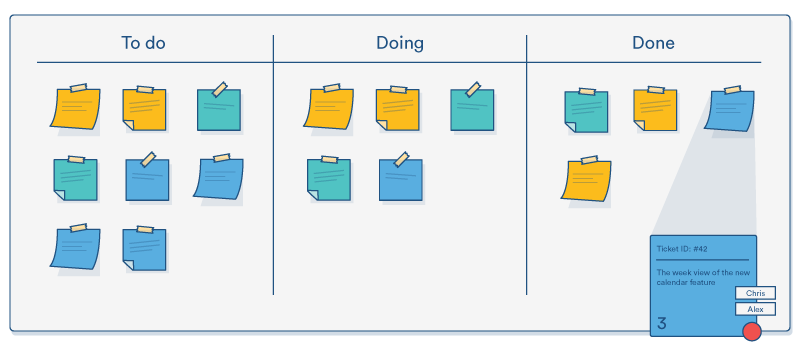
Increment
Description
An increment is a set of functionalities or new features added to the product during each sprint. These are parts of the product that are complete and potentially deliverable at the end of the sprint. Each increment must be usable, even if not all of them are put into production immediately.
In simple terms, in each sprint, the Scrum team develops and adds a new feature or enhancement to the product, making gradual progress towards the final product objective (Product Goal).
Quality criteria – Definition of Done
The Definition of Done is a set of criteria that the increment must meet to be considered complete. It guarantees that the product meets the required quality standards and ensures consistency and clarity within the team. Definition of Done is crucial to maintaining the transparency and quality of delivered increments. .
Engagement Associé – Definition of Done
The commitment associated with the increment is the Definition of Done. This commitment ensures that the work is completed to the required quality standards before it is considered complete. Once the Product Backlog items comply with the Definition of Done, they can be integrated into the increment. This creates transparency and a shared understanding of what constitutes a finished job. We explored Definition of Done in detail in this article: Definition of Done (DoD): Everything you need to know.
Delivery and Feedback
The delivery and feedback process is essential for continuous product improvement. At the end of each sprint, the increment is presented at the Sprint Review. This review enables the team and stakeholders to inspect the increment and provide feedback. This feedback is used by the Product Owner to adjust the Product Backlog and plan the next sprints, ensuring that the product evolves iteratively and incrementally to better meet user needs.
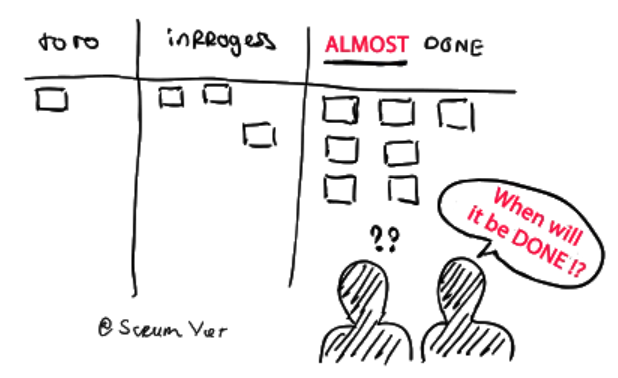
To sum up
Scrum artifacts are essential to guarantee transparency, inspection and adaptation within a Scrum team. The Product Backlog, Sprint Backlog andIncrement each play a key role in organizing and managing work.
- Product Backlog: Maintained by the Product Owner, it represents the single source of all work planned for the product. The associated commitment, the Product Goal, gives the Scrum team a clear direction and a long-term objective.
- Sprint Backlog: Created during Sprint Planning, it contains the selected elements of the Product Backlog to be realized during the sprint, as well as the Sprint Goal, which provides a precise focus for the team.
- Increment: Each sprint produces a usable increment that respects the Definition of Done, guaranteeing that the product is of high quality and ready for delivery.
By using these artifacts, Scrum teams can maximize their productivity and the added value of each iteration. The commitments associated with each artifact reinforce the importance of transparency and focus, enabling better adaptation to the evolving needs of users and stakeholders.
Sources
- Scrum Guide : Official Scrum Guide.
- Article on artifacts on Scrum.org: Deep Dive into the Purpose of Each Scrum Artifact/
- Official definition of Scrum artifacts: The Scrum Artifacts.

